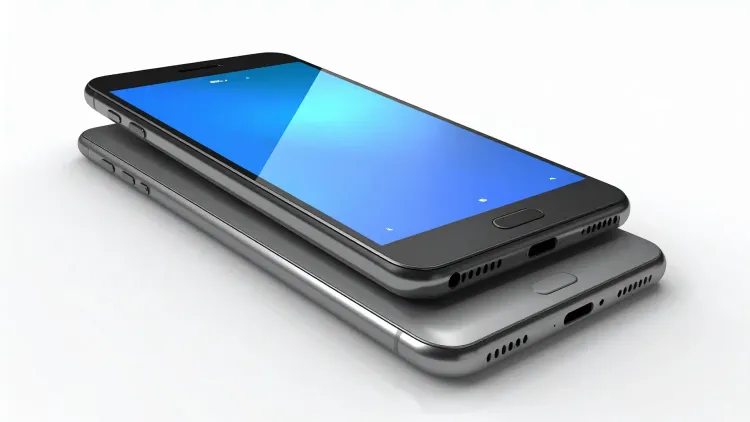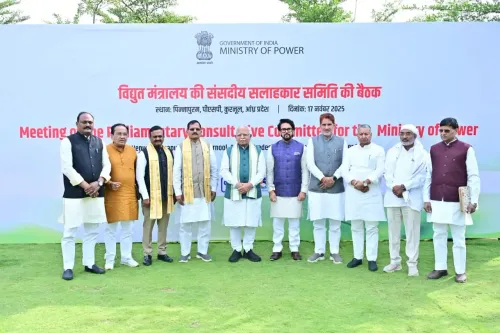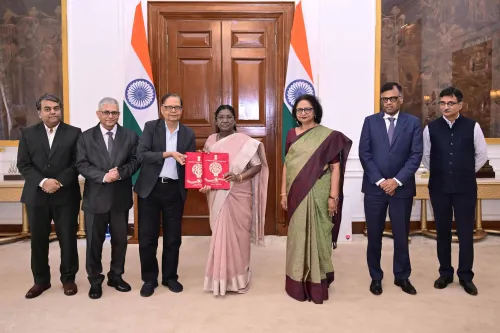Have 5G handsets really reached 87% of smartphone shipments in India?

Synopsis
Key Takeaways
- 5G handsets made up 87% of India's smartphone shipments in H1 2025.
- India ranks 14th globally in 5G smartphone shipments.
- 5G smartphones constitute 71% of global shipments.
- 4G remains the primary network in lagging regions until 2030.
- Challenges in Pakistan hinder 5G adoption.
New Delhi, Oct 3 (NationPress) The proportion of 5G handsets in the smartphone shipments in India has surged to 87 percent in the first half of CY 2025, signaling that consumers are rapidly embracing advanced technologies in the smartphone sector, according to a recent report.
The report from Counterpoint Research highlights that India now ranks 14th globally regarding the overall 5G share in total smartphone shipments.
In the first half of 2023, the share of smartphone shipments in the Indian market was 47 percent, placing the country at 40th position. This figure has escalated significantly in the first half of 2024.
Globally, 5G smartphones have established themselves as mainstream, constituting 71 percent of overall smartphone shipments in H1 2025, the report reveals.
The adoption of 5G smartphones has seen rapid growth across both developed and emerging markets, primarily driven by increasing consumer demand, affordable devices, and expedited 5G network rollouts.
Conversely, countries like Venezuela and Ecuador are experiencing sluggish growth in their 5G smartphone shipment shares.
In H1 2025, the average 5G share among the bottom 10 countries stood at merely 15 percent, with Asia being the largest 5G smartphone market worldwide. However, Pakistan and Bangladesh are among the nations with the weakest 5G uptake.
Despite being the seventh largest market for smartphone shipments in Asia during H1 2025, Pakistan has yet to initiate 5G services. The government has postponed spectrum auctions since 2021 due to complaints regarding high costs, alongside infrastructural inadequacies and fiscal challenges that hinder access to 5G devices.
The research organization noted that while 5G is on a steady growth trajectory, 4G will likely remain the primary mobile network in these lagging nations until at least 2030.
Latin America’s overall 5G shipment share surpassed 41 percent in H1 2025, yet Venezuela ranked the lowest globally, with only 1 percent of its smartphones supporting 5G networks. Despite the introduction of its first 5G Fixed Wireless Access (FWA) service in June 2025, low per capita GDP confines most Venezuelans to 3G and 4G devices. The country is grappling with hyperinflation, high unemployment, and U.S. sanctions, severely impacting its telecommunications sector.
Six out of the bottom ten countries with the lowest 5G smartphone shipment shares are from Africa, highlighting a noticeable lag in 5G adoption across these regions.









